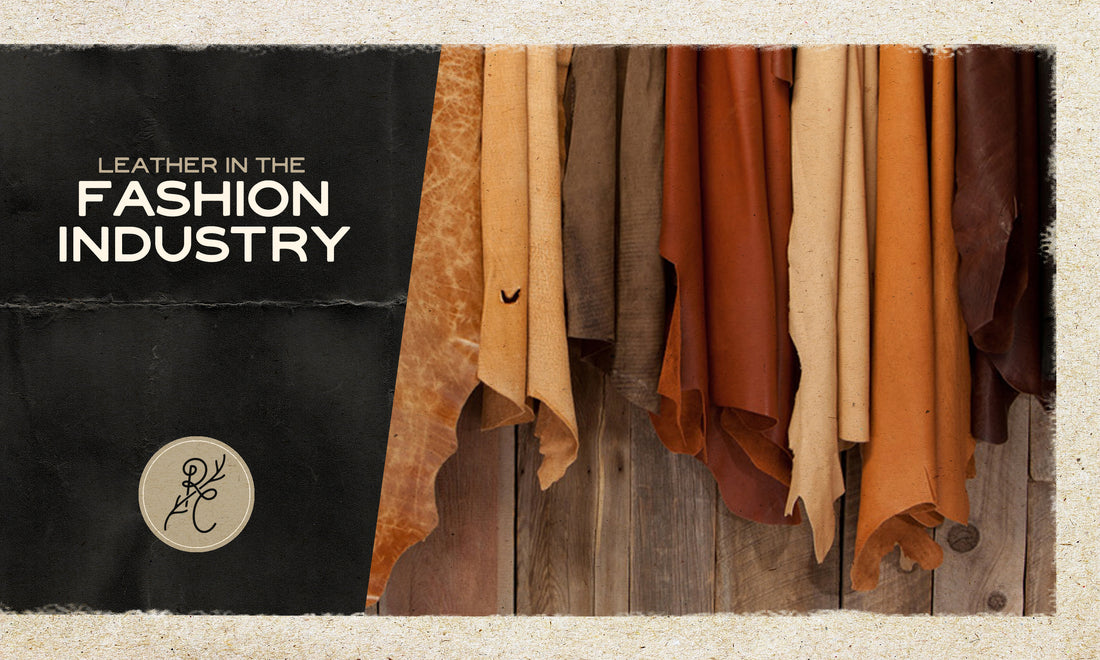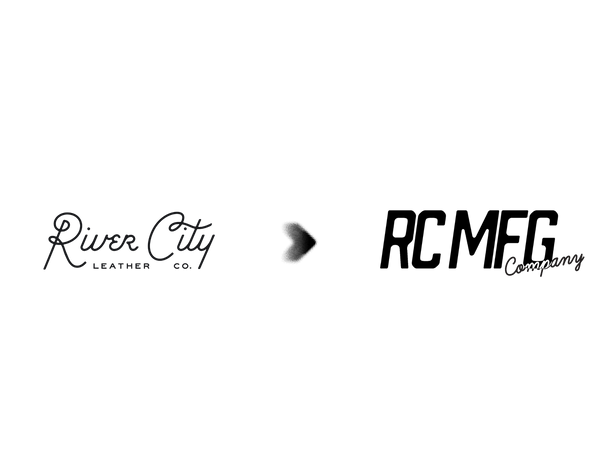
Leather In The Fashion Industry
Share
There are certain eras in history that propelled civilization to the world we know today. Many of them are defined by the catalyst that sparked innovation – the Stone age, the Bronze age, the Agricultural Revolution, the Iron age, and the Industrial Revolution were all named for the tools that allowed civilization to progress to the next level.
But when discussing the materials that made progress possible, iron and steel are the most commonly discussed. It is true that the Iron age brought with it the ability to develop specialized tools, and the Industrial Revolution brought us widespread use of steel. But what about the straps, belts, and accessories that make all of that equipment possible?

Leather is rarely discussed as a catalyst for the progression of human civilization, but it has actually played a very large role. Long before leather was used to create handbags and clothing, it was used for very practical purposes. It wouldn’t be until the Middle Ages that leather items would begin to be considered fashionable or symbols of luxury.
A look at the role leather played in the advancement of mankind
Leather played a much larger role in the survival and advancement of mankind than it is given credit for. Here are some of the ways that leather was crucial to this development.

Shelter – 400,000 years ago
Early man had no need of clothing, and only used hides for temporary shelters or more permanent teepee-like tents. The first evidence of tanning hides for this purpose dates back to 400,000 years ago, when man only used leathers to shelter them from intense sun or rain.
Blankets – 8,000 years ago
Leather blankets surfaced about 8,000 years ago. This important milestone came about due to the climate changes happening all over the world.
Outerwear and protective clothing – 7,000 years ago
As climate continued to change, outerwear such as cloaks and jackets became necessary. Evidence of tools made of bone have been dated to around 7,000 years ago, and with threadlike material made joining more than one piece of leather possible. The first clothing was also likely made from leather, but it was only worn when deemed necessary.

Footwear – 5,500 years ago
Yes, it would be another 1,500 years before man would use leather to make shoes. The earliest leather shoe found so far dates back to 3500 BC in Armenia. Leather footwear would have given people more freedom in exploration. Around this time people began using animal and vegetable fats to tan hides and make them somewhat water resistant.
Chariot harnesses and couplings – 5,100 years ago
Leather was the obvious material of choice for ancient Egyptians and Greeks for crafting harnesses, bridles, and other equestrian equipment. The earliest leather harnesses found to date were located in Egypt and dated to 3100 BC. Leather is still the preferred option for harnesses, saddles, and tackle today.

Leather upholstery furniture – 5,000 years ago
It makes sense that cushioned leather is still a favorite upholstery for furniture, particularly in the dining room. Leather is a long-lasting, durable material that resists odors from food and is easy to clean. The oldest furniture upholstered in leather again comes from Egypt, dating to the dynastic period (3100-2682 BC).
Leather upholstery was very popular in Greece, with the oldest leather chairs found there from 700 BC. Leather dining chairs regained popularity in Medieval England, where they were both practical for large feasts and a sign of social status.
Farming equipment in the Iron Age – 3,200 years ago
With the Iron Age came new tools for working the land, leading to an explosion often referred to as the Agricultural Revolution. Iron wasn’t the only material used to create and use these tools – they are merely what is left behind. Leather straps have always been used for wielding these items, as well as for binding handles to iron tools.
Military equipment and armor – 2,500 years ago
We can see evidence of leather being used in armor in many societies. Wars raged across Europe, the Mediterranean, Asia, and beyond for centuries. Well-tanned and treated leather were often used in protective gear. Ancient Egypt, Rome, and the Norse all used leather in their armor and military equipment.

Leather in the publishing industry – 1500 years ago
The publishing industry first started producing leather bound books about 400 AD. By the Middle Ages leather was very commonly used to bind books, which were already expensive to make. Although not mass produced today, you can still buy some volumes leather bound.
But leather was used for recording information long before that. Some of the oldest writings found in Egypt are on scrolls of leather. The parchment that you hear so much about when learning of American historical documents, was actually a type of leather as well.
Leather is the unsung hero of the Industrial Revolution – 200 years ago
It is hard to believe that it has been 200 short years since the Industrial Revolution changed the landscape of the world forever. Newly founded mass manufacturing led to new, faster ways to tan leathers so that the traditional items of shoes, belts, and outerwear could be manufactured on a larger scale. (Not to mention at a lower price.)
What people don’t think about is leather’s much larger role in the Revolution itself. Rubber was not widely used at the start of this period. All of those machines still had belts and straps, just as they do today. Leather was used for those belts, even in some motorized vehicles. Without leather, none of the rest of the Revolution would have been possible.

Transitioning from functional to ornamental leather clothing and accessories
As you can see, up to the Industrial Revolution leather footwear, outerwear, belts, and other accessories were primarily functional rather than ornamental. They were not necessarily a symbol of status, and in the earliest times people fashioned these things for themselves rather than buying or trading for them.
So how did we come to think of leather as a fashionable item?
Middle Ages bring advancements in sewing implements and practices
The Middle Ages was filled with advancements in different types of sewing needles and threads, and these were used to create beautiful tapestries, handbags, and other ornamental items. But most of those items were in fine fabrics and materials, not leather.

Still, the advancements extended to the working of leather for cloaks, coats, hats, and bags. The Middle Ages are also the first time we see leather being decorated for both functional and decorative reasons. Although many people had at least a crude shoe made of leather, this is also the first time we see footwear as a clear sign of social status. The longer the toe of a leather shoe, the wealthier the wearer.
The use of leather in fashion remained the same throughout the Renaissance period. By the time of the Victorian Era, leather bags, satchels, and book bindings are extremely common.
The Industrial Revolution brings leather footwear and outerwear to the masses
With the new methods in tanning and different, cheaper ways to make leather goods, these items became even more commonplace. Leather is still a practical  choice for footwear, and being able to mass produce them made them available to more people. The same was true for belts and outerwear.
choice for footwear, and being able to mass produce them made them available to more people. The same was true for belts and outerwear.
Even though the quality of leather could mark one’s class, leather clothing, shoes, and accessories were rarely considered a boast in fashion.
World War II Bomber jackets bring leather fully into fashion
In World War II, pilots were given padded leather jackets that were meant to be purely functional. However, the style caught on when the war ended, and everyone wanted a “bomber jacket.” This was the first time that leather truly entered the fashion world.
Then, in the 60s and 70s, bikers across the nation adopted the leather jacket as a symbol of their lifestyle. Designers were once again making handbags and accessories from leather, but this time they were doing so with fashion in mind rather than function alone.
Otherwise, leather has remained a mostly functional item, although it would be easy to digress on the fashion of footwear using leather in its design. The 90s brought leather back to the surface with many designs of clothing and accessories in leather and suede, including the hideously uncomfortable leather pants. Thankfully that restrictive leather clothing didn’t stay in style for long.
Today more people are turning back to leather handbags, backpacks, purses, and wallets in an attempt to decrease their carbon footprint. As they do so we can look forward to new strides in leather fashion.
